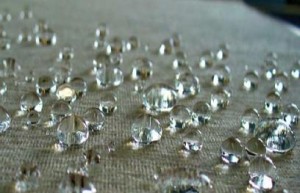Jeans bleaching – advantages and risks of different bleaching processes (1/3)
The dyeing and finishing of ready-made jeans garments has gained increasing prominence in recent years. The global market for denim jeans is projected to reach $56 billion by the year 2018, according to Global Industry Analysts.
 Originally used exclusively for workwear, jeans have gained a position of ever-increasing importance in the clothing market, due to wearing comfort and fashion. Designers learned to make jeans attractive to an ever increasing number of customers through innovative modifications and styling. One of the increasing styles – especially for the summer season – is bleached jeans. “Bleached jeanswear is back in vogue and is most suitable for a lovely and romantic look.” [1]
Originally used exclusively for workwear, jeans have gained a position of ever-increasing importance in the clothing market, due to wearing comfort and fashion. Designers learned to make jeans attractive to an ever increasing number of customers through innovative modifications and styling. One of the increasing styles – especially for the summer season – is bleached jeans. “Bleached jeanswear is back in vogue and is most suitable for a lovely and romantic look.” [1]
Bleached denim, of the garment washed, are stone-washed and bleached with different chemicals and treatments. Bleaching is a treatment of textiles in order to lighten the fabric for the final shades.
To read the full article, please login. The full content of this article and all premium articles is available exclusively for site members.
Site membership is free. If you are an existing user, please login. New users may register below.



